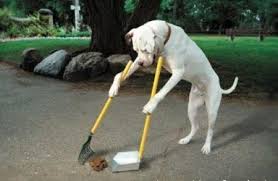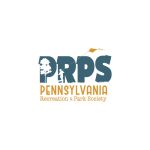
Yes, this is my first “dog blog” and it can be said, “It’s a dog's life.” The truth of the matter is for many dog owners, our dogs are much more than pets. We consider them part of our family!
With pet ownership on the rise in the United States, several communities are advertising themselves as “pet-friendly” to help attract new buyers and renters. And municipal park & recreation departments have been leading the pack for many years in dog park development.
Whether you currently have a dog park, looking to improve your dog park or are simply looking for some tips for planning and building a dog park, I hope you find a few dogs gone good tips here you can use.
Location, location, location.... after all, it is real estate we’re talking about. Ideally, you want your dog park to be situated to the side or at the back of a community if possible. Typically a developer will take all prime land for building, but keep in mind a dog park doesn’t necessarily need to be open and flat! A sloping or parcel that has well-established trees can be both interesting and make for good terrain for dogs to roam and play.
Fencing includes two basic structures...
- Perimeter fencing which should be a minimum of 5’ high so larger dogs won’t easily jump out. and
- a double gate entry to give owners and dog a chance to acclimate and leash or unleash before entering or exiting the main area. Gate placement in corners is not advised as it may create a bottleneck for traffic and possibly enable an onrushing dog to “corner” the new dog entering creating a situation that may lead to a dog becoming aggressive. A great majority of our dog park surfaces are grass, largely due to the low expense to install/establish.
However, contrary to popular belief, grass should be avoided if possible for surfaces for dogs. As many are already experiencing, the constant running, digging and romping of dogs chew up the turf quickly and what is left is a dirty and sometimes muddy mess.
Additionally dog urine has a high amount of nitrogen which can also kill the grass. Selecting an alternative material can often save maintenance costs in the long run. Materials such as crushed granite ranging from 1/4” too sandy consistency is an excellent resource and are very low maintenance. There are also specially designed artificial turfs for dog parks. The initial cost may be high but the long-term maintenance and ease of managing the surface may well be worth the cost.
Having two sections, one for large dogs and one for small dogs is a must. Any veterinarian or dog trainer will confirm this immediately and for good reasons, not the least of which is controlling behavior between competing sizes of dogs.
Clearly displaying and enforcing the rules of your dog park is the first line of defense and operation for the community. A word on water supply, avoid large buckets or baby pools for water as they can create a breeding ground for mosquitoes and or disease. A high/low water fountain is ideal, both for owners and their furry friends. Lots of dogs mean lots of poop. Something you can absolutely count on. A comprehensive pet waste management plan is essential and include several pet waste bag dispensers and keep them filled.
Finally, benches, shade, and places for the owners to congregate is also essential. After all, this is as much a social event for the dogs as it is for the community. What better way to meet a new neighbor than to share pet stories and experiences. Just be sure space is open for owners to keep an eye on their dogs and so they can easily access their pet and visa versa!
 Yes, this is my first “dog blog” and it can be said, “It’s a dog's life.” The truth of the matter is for many dog owners, our dogs are much more than pets. We consider them part of our family!
With pet ownership on the rise in the United States, several communities are advertising themselves as “pet-friendly” to help attract new buyers and renters. And municipal park & recreation departments have been leading the pack for many years in dog park development.
Whether you currently have a dog park, looking to improve your dog park or are simply looking for some tips for planning and building a dog park, I hope you find a few dogs gone good tips here you can use.
Location, location, location.... after all, it is real estate we’re talking about. Ideally, you want your dog park to be situated to the side or at the back of a community if possible. Typically a developer will take all prime land for building, but keep in mind a dog park doesn’t necessarily need to be open and flat! A sloping or parcel that has well-established trees can be both interesting and make for good terrain for dogs to roam and play.
Fencing includes two basic structures...
Yes, this is my first “dog blog” and it can be said, “It’s a dog's life.” The truth of the matter is for many dog owners, our dogs are much more than pets. We consider them part of our family!
With pet ownership on the rise in the United States, several communities are advertising themselves as “pet-friendly” to help attract new buyers and renters. And municipal park & recreation departments have been leading the pack for many years in dog park development.
Whether you currently have a dog park, looking to improve your dog park or are simply looking for some tips for planning and building a dog park, I hope you find a few dogs gone good tips here you can use.
Location, location, location.... after all, it is real estate we’re talking about. Ideally, you want your dog park to be situated to the side or at the back of a community if possible. Typically a developer will take all prime land for building, but keep in mind a dog park doesn’t necessarily need to be open and flat! A sloping or parcel that has well-established trees can be both interesting and make for good terrain for dogs to roam and play.
Fencing includes two basic structures...
